- Lucas Schleicher
- Albums and Singles
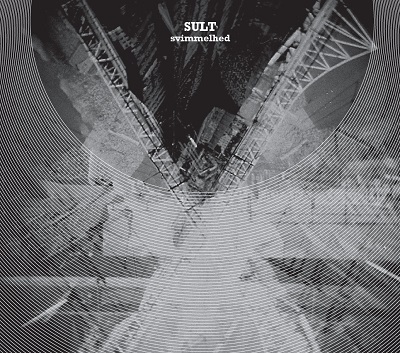 Rhythm is often a matter of togetherness. It binds songs like mortar, measures melody and harmony, marks the entrances and exits of instruments, and draws distant ideas into close proximity, if not for the sake of a single voice, then for the sake of single performance or a unified work. Though they are a quartet of two contrabasses, percussion, and guitar, Sult rejects that mode of timekeeping on Svimmelhed. Repeated patterns and measured distances are supplanted by an anatomical focus, on the particulars of steel and nylon strings, plastic drum heads, and wooden bodies. Sult break the gluey qualities of their instruments into atomic elements, then separate and catalog them like isotopes or tints and shades of a mother color.
Rhythm is often a matter of togetherness. It binds songs like mortar, measures melody and harmony, marks the entrances and exits of instruments, and draws distant ideas into close proximity, if not for the sake of a single voice, then for the sake of single performance or a unified work. Though they are a quartet of two contrabasses, percussion, and guitar, Sult rejects that mode of timekeeping on Svimmelhed. Repeated patterns and measured distances are supplanted by an anatomical focus, on the particulars of steel and nylon strings, plastic drum heads, and wooden bodies. Sult break the gluey qualities of their instruments into atomic elements, then separate and catalog them like isotopes or tints and shades of a mother color.
iTunes????
Recorded in Oakland, California, Svimmelhed (Danish for "dizziness") is a transatlantic collaboration between the Bay area’s Jacob Felix Heule and Tony Dryer, and Oslo, Norway residents Håvard Skaset and Guro Skumsnes Moe. All four have recorded together in the past, as part of the Bay/Oslo Mirror Trio, a sextet that also featured double bass, guitar, and drums. Their history goes some way in explaining why Sult sounds like such a meticulous and concise project. Their focus on the extra-rhythmic properties of rhythmic instruments explains the rest. Although they improvise throughout the album, the big ideas governing those improvisations are relatively clear, of which the primary guideline might be rendered as, "Disassemble your instruments into their component parts, then play those parts as if they were the album’s lead voices."
Those voices get something close to a solo for the 17 minutes that constitute the middle portion of the album, from "Døren II" to "Uvel." Bows are drawn heavily across strings, so that they sound like saws cutting through metal and drum heads are stretched and warped to the point of breaking—it’s a cacophony, but a surprisingly quiet and transparent one. The detail of each pop and raspy collision comes through even as they are played to match the volume of a pin drop. "Snylter" and "Uvel" are even more granular. Short, muted runs up and down the guitar combine with the sounds of shuffled paper and muted cymbals, some of which hover in silent space, and the crystalline ring of strings played near the pegheads fall around long, severely scraped bass performances so closely mic’d they sound esophageal. "Jern" and "Døren I" bookend the album with extended group improvisations, where the aim is more communal. The same techniques found in the middle portion are utilized across two 13-plus minute experiments that pull the point-of-view back, exposing not a band sound, but a musical continuum that begins with rhythm and ends someplace much broader.
samples:
 
Read More
- Administrator
- Albums and Singles
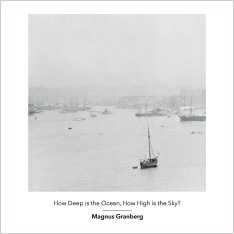 Magnus Granberg’s fourth composition for Another Timbre—and second album under his own name—borrows its title and some of its musical material from Irving Berlin’s "How Deep is the Ocean," written in 1932 and recorded through the years by such luminaries as Ella Fitzgerald, Judy Garland, and Julie Andrews. Anyone who just listens to the music, however, might not realize that, because Granberg also looked to Satie’s "Deuxième Préludes du Nazaréen" for rhythmic inspiration. "Nazaréen’s" slow, even movements and muted dynamics are an obvious model for the suspended animation of Granberg’s hazy textures. The link to Berlin’s jazz standard resides less in its melodies and more in its lyrics, which pose a series of questions as an answer to the song’s first line, "How much do I love you?" Nobody sings on How Deep is the Ocean, How High is the Sky?, and it doesn’t pose anything like an obvious question, but the album’s unusual instrumentation and constantly shifting sound chip away at easy musical distinctions in the same manner that Berlin’s lyrics try to answer a question for which words are rarely sufficient.
Magnus Granberg’s fourth composition for Another Timbre—and second album under his own name—borrows its title and some of its musical material from Irving Berlin’s "How Deep is the Ocean," written in 1932 and recorded through the years by such luminaries as Ella Fitzgerald, Judy Garland, and Julie Andrews. Anyone who just listens to the music, however, might not realize that, because Granberg also looked to Satie’s "Deuxième Préludes du Nazaréen" for rhythmic inspiration. "Nazaréen’s" slow, even movements and muted dynamics are an obvious model for the suspended animation of Granberg’s hazy textures. The link to Berlin’s jazz standard resides less in its melodies and more in its lyrics, which pose a series of questions as an answer to the song’s first line, "How much do I love you?" Nobody sings on How Deep is the Ocean, How High is the Sky?, and it doesn’t pose anything like an obvious question, but the album’s unusual instrumentation and constantly shifting sound chip away at easy musical distinctions in the same manner that Berlin’s lyrics try to answer a question for which words are rarely sufficient.
Unlike anything Irving Berlin ever employed, Magnus Granberg’s orchestra is made up of nine musicians, not including himself, more than half of whom play an instrument that is approximately 400 years old. The chitarrone, bass recorder, viola de gamba, spinet, and baroque violin stick out almost as historical curiosities, especially on an album that sounds like it belongs more to this century than to anything in even the last 150 years, and which counts analogue synthesizer, prepared piano, various electronics, and unspecified objects among its instruments.
In an interview on the Another Timbre website, Granberg explains that the spinet player, Christoph Schiller, suggested using period instruments to reflect the music scene in and around Basel, where the album was recorded. The degree to which his suggestion succeeds depends on what the listener knows about Basel, Switzerland and the Schola Cantorum Basiliensis. The more immediate impression is that of deliberation and careful listening. Sounds often come one at a time, or in small increments, and at low volumes. Gestures wind up into the air then drop into silence like they’re tied to bowling balls. Mouse-like scampering occupies the place normally reserved for percussion and very slight electronic distortions murmur in the background as if they’re trying to be quiet during a lecture. The formality betrays the degree to which the music is composed, the seeming randomness of its development speaks to the improvisation on display. The album’s middle portion, especially around the 28 minute mark, is particularly formal. The sequence of events could have been scored for a radio play or a very tense theatrical scene, but it’s just one passing moment among many, perhaps an example of synchronicity and perhaps a calculated outcome.
The second, maybe less obvious impression is that of distillation, or of haunting. Satie and Berlin haunt the music in the sense that Granberg invited them to haunt it, but their presence isn’t obvious. Knowing that they are there at all helps only a little. Their remains are neither purified nor concentrated in the resulting concoction. Instead they are experienced at a remove, either as historical fact or as concealed musical ingredient. What’s left is a ghostly expression of emptiness, of instruments played in a museum, or of music sealed behind glass, which is not to say that it sounds artificial. At times the opposite is true: the music seems to play itself, or it presents itself as a physical fact, the consequence of gravity, solar flares, jet streams, and tidal forces. The human element slips into the depths and the elemental features of music, condensed into a few representative examples, float to the surface—where they tick away like a perfectly engineered clock in an empty room.
samples:
- How Deep is the Ocean, How High is the Sky? [Sample 1]
- How Deep is the Ocean, How High is the Sky? [Sample 2]
- How Deep is the Ocean, How High is the Sky? [Sample 3]
 
Read More
- Administrator
- Albums and Singles
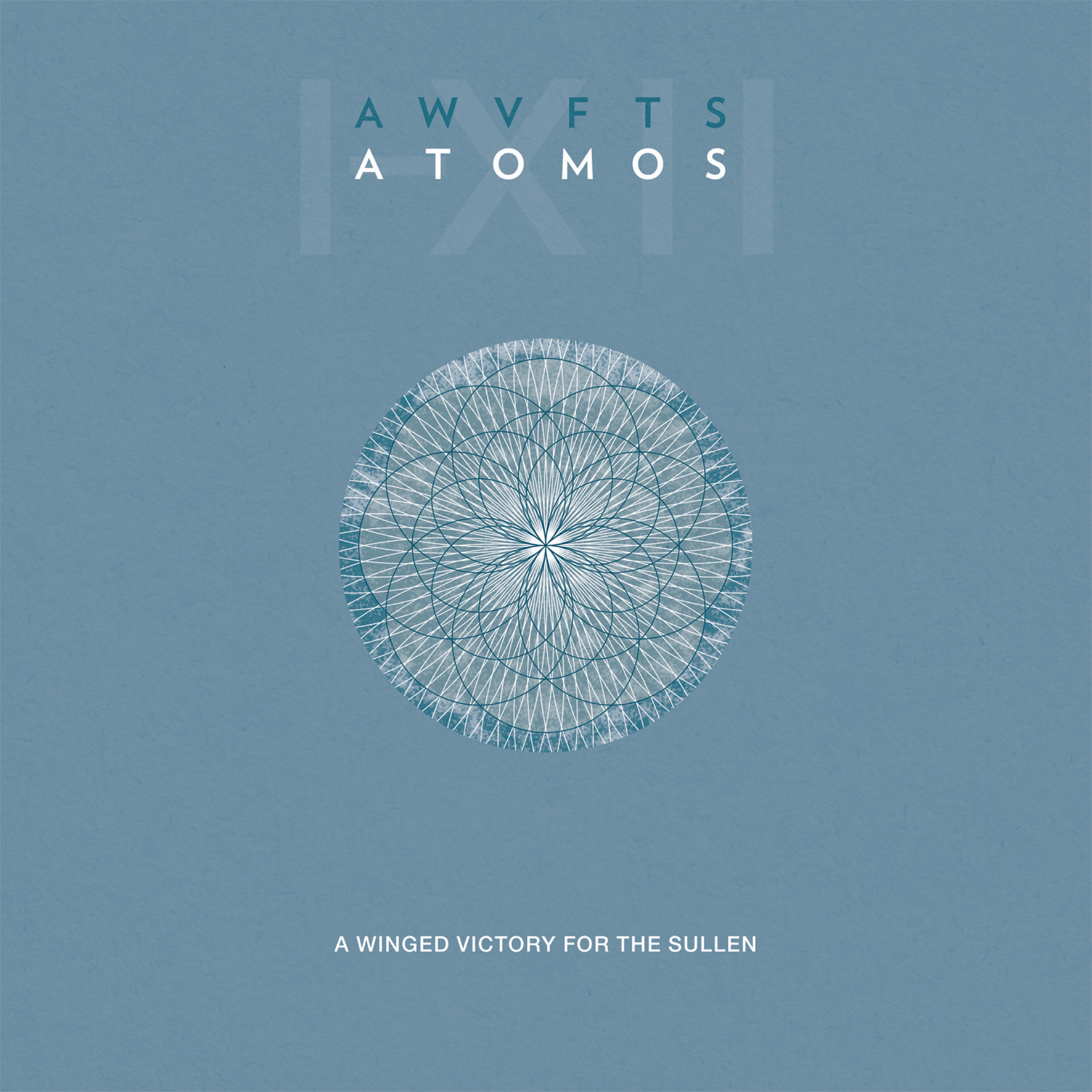 Winged Victory's second full-length album is an hour-long score composed for a dance piece by the Royal Ballet's resident choreographer Wayne McGregor, but the line separating such an endeavor from AWVFTS's traditional activities is thin at best.  First glimpsed earlier this year with the slightly more experimental Atomos VII EP, Atomos offers exactly the sort of the slow-moving, neo-classical melancholia that I have grown to expect from Adam Wiltzie and Dustin O’Halloran, but with some subtle, yet significant, evolution in both their compositional approach and their instrumental palette.
Winged Victory's second full-length album is an hour-long score composed for a dance piece by the Royal Ballet's resident choreographer Wayne McGregor, but the line separating such an endeavor from AWVFTS's traditional activities is thin at best.  First glimpsed earlier this year with the slightly more experimental Atomos VII EP, Atomos offers exactly the sort of the slow-moving, neo-classical melancholia that I have grown to expect from Adam Wiltzie and Dustin O’Halloran, but with some subtle, yet significant, evolution in both their compositional approach and their instrumental palette.
Atomos does not waste any time in showcasing how Adam and Dustin have grown as a duo, as the opening "Atomos I" is arguably the boldest and most fully realized departure from their past work on the entire album.  However, in Winged Victory's world, such changes are very relative: most of the piece still sounds an awful lot like glacially moving ambient drone made with organic instrumentation like piano and strings, but there is a bit more sharpness, clarity, and overt sense of purpose this time around.  "Atomos I" is much more than a bleary, pastoral reverie, as the warm, churning strings boast an unexpected nakedness and prominent physical presence and build to a darkly melodic crescendo that is far more indebted to Philip Glass (albeit not so bombastic) than Victory's previous Satie- and Eno-esque leanings would have led me to expect.
The remaining pieces are rarely that dramatic, however, though the album mostly maintains a lovely and languorous sense of beauty slowly billowing up from warmly static drones.  For the most part, the first half of the album all blurs together pleasantly in that vein, though Wiltzie and O’Halloran sometimes build up to a gentle simmer.  There are some exceptions, however, the most notable of which is "Atomos V," which gradually snowballs from a shimmering pulse and a wonderful one-finger piano melody into a lushly beautiful crescendo of ascending strings.  Things immediately cool back down again (somewhat), but the rest of Atomos is never quite the same again, as the remaining pieces are considerably more prone to drama and other divergences from the duo's earlier droning.
Both "Atomos VI" and "Atomos VIII" stand out as being particularly dark and forceful, incorporating unexpected touches like static; shuddering masses of strings; throbbing underlying tension; and dark, vaporously dissolving violin arpeggios.  The album later reaches a second crescendo of sorts with "Atomos X," which builds from a quavering, crackling, and pulsing synth intro into one of the album's stronger minor key string arpeggios.  This time, however, the duo depart from their traditional minimalist patterns to delve into some bittersweet harmonies and a lovely descending melody that dissipates into a coda of chattering, garbled voices.  That is probably the melodic and artistic zenith of Atomos’s arc, but the remaining two pieces do a perfectly fine job of bringing the score to a satisfying conclusion, taking the album to a propulsive and sweepingly melancholy climax before resolving into simple and elegant final act centered around a naked, sharply realized two-note violin pattern.
While I am left with several perplexing questions ("Why is there no 'Atomos IV?', "Why didn't they choose a more striking piece than 'Atomos VII' for the teaser EP?", and "Could this have been even better if they had kept working with Ben Frost?"), none of them are serious enough to hamper my enjoyment at all. Sound engineer/collaborator Francesco Donadello does a fantastic job making Winged Victory sound more crisp and alive than they generally have in the past and it is difficult to imagine anyone who would not concede that Atomos reaches higher highs than the duo's self-titled debut.  It is a true rarity for a film or dance score to hold its own as a stand-alone album or even to favorably compare to an artist's other work, since such music is inherently intended as background or a mere part of a larger, multi-sensory whole.  While Atomos is not entirely impervious to those intrinsic problems, it tends to transcend them more often than not, resulting in an effort that is probably the duo's single finest showing to date.
 
 
Read More
- Administrator
- Albums and Singles
Current 93 dreamt by Andrew Liles: Like Swallowing Eclipses 6LP box set
Appearing for the first time on vinyl are the complete highly acclaimed Andrew Liles remixes of the first five classic Current 93 albums. Andrew Liles has reimagined Nature Unveiled, Dogs Blood Rising, In Menstrual Night, Dawn and Live at Bar Maldoror. Also exclusive to this set is a sixth LP, Haunt Invocation (Apadno) which is a remixed version of Faust and A Special Plan. These influential albums by Current 93 are regarded by many as groundbreaking and innovative; building upon this Andrew Liles has redreamt and reimagined these pieces with the flair and vision that he is renowned and respected for.
All the records in this 6LP set come in individual covers and a beautiful spot varnished box and are adorned with astounding artwork by David Tibet and photographs by Simona Dalla Valle. STRICTLY LIMITED TO 1000 COPIES WITH NO REPRESS.
- LP1: Nature Revealed
- LP2: Dogs Blood Descending
- LP3: The End of Red Dreams
- LP4: Dead at Bar Maldoror
- LP5: Dusk
- LP6: Haunt Invocation (Apadno)
The box set is available for purchase from solitary singer-songwriter Andrew Liles, who—together with David—murdered, with exultation, C93’s multi-platinum back catalogue and made us made for loving you all. It is also available from the source (to whom great thanks) of this beautiful box set, Steve Pittis’ record label, Dirter. It is not available from Coptic Cat.
Current 93: Two extraordinarily beautiful box sets from Vinyl on Demand
These two box sets are nearly ready, and will be on display at the C93 London shows, though it is unlikely that copies will be available for sale there—the copies on display are being sent by express by the manufacturer. Please note that these box sets are not available from Coptic Cat or Jnana Records, but only from VOD.
The VOD press release is as follows:
VOD74: CURRENT 93 4LP Unreleased Rarities, Out-takes, Rehearsals and Live 82–95

shown above: the box for Volume 1 and the sleeve for one of the records
VOLUME 1: Wooden box set, with embossed cover of blood-red C93 symbol, of David Tibet’s Current 93 project includes two LPs with unreleased rarities, out-takes, rehearsals and demos dating from 1983–1995 as well as another 2 LPs with four performances from Amsterdam (1984), Hamburg (1985) and Tokyo (1988). Also contained is a beautiful silkscreened poster made out of hand-made paper produced in Nepal. The box will also contain a metal badge and will be accompanied by a 28-page booklet, with embossed cover, full of very personal photos personally selected by David Tibet from his archives. The booklet itself manifests a journey back in time to the first 15 years of Current 93’s existence. Members will recieve an additional bonus 7“ with two songs from the 1988 Reykjavík performance and the complete London concert at the 100 Club from 1985.
VOD75: CURRENT 93: 4LP set including ‘CHRIST & THE PALE QUEENS, MIGHTY IN SORROW’, ‘THE RED FACE OF GOD’, ‘EMBLEMS’ and ‘AS THE WORLD DISAPPEARS’

shown above: the box for Volume 2 and the sleeve for one of the records
VOLUME 2: Wooden box set, with embossed cover of blood-red C93 symbol different to that on Volume 1, of David Tibet's Current 93 project will contain ‘Christ and the Pale Queens’ plus ‘The Red Face of God’ as a Double LP; ‘As the World Disappears’, released for the first time ever on vinyl, and finally an official release of the legendary ‘Emblems’ LP, which has until now only existed as a test pressing. ‘Emblems’ was originally going to be a single LP of material that was only released on the now-deleted 2CD ‘Emblems’, but it never progressed beyond a very limited run of white vinyl test pressings, which are now ferociously rare and expensive. The box will also contain a metal badge (a different badge to that in VOD74) and will be accompanied by a beautiful booklet, with embossed cover, with very personal photos selected by David Tibet from hi s archives; this booklet is totally different to the one in VOD74. Members will also receive in addition a long-sleeve Current 93 T-shirt.
At David Tibet’s express request, the covers for all the LPs have been supplied by the wonderful German, Berlin-based, artist Uwe Henneken, who has used C93 album, and song, titles for many of his extraordinary creations. For more information on Uwe, see this page and also this one.
There is a limited quantity of the pictured deluxe silkscreened and embossed fine linen folder to complete and protect the 2 wooden boxes which can be bought from VOD. (Those VOD members who have subscribed to all 12 releases of 2010 receive the linen folder for free.)
All records of VOD74 and VOD75 will also be sold seperately as stand-alone records in a very limited edition of 231 copies each.
Read More
- Administrator
- Albums and Singles
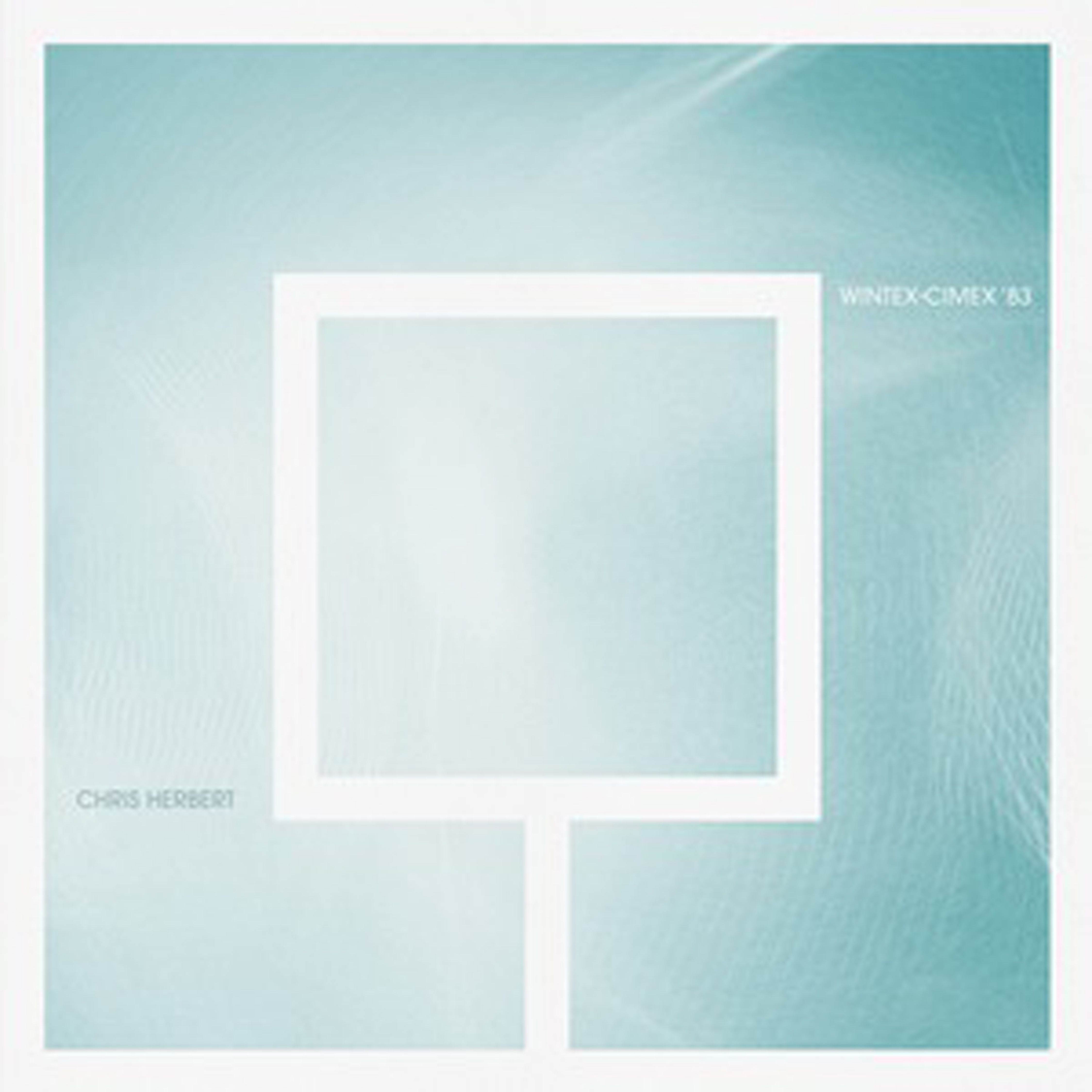 Way back in 2006, Chris Herbert released the excellent Mezzotint on Kranky, an album that established him as one of the most compelling drone artists around at the time.  Since that hugely promising beginning, however, he has remained largely dormant, surfacing only rarely and struggling to find the time to work on new material.  Thankfully he eventually found it, but this pair of releases did not come easily, as they are both culled from material dating back to 2007.  Despite that period of inactivity and the patient composition process, however, Herbert is remarkably still at the top of his game.  Aside from some parts of the Wintex EP, these new pieces perhaps lack some of Herbert’s earlier melodic immediacy (listen to Mezzotint’s "Let’s Get Boring!"), but he more than compensates for that through hypnotic depth and rich texture.  In fact, I think at least one of these releases may very well be a masterpiece.
Way back in 2006, Chris Herbert released the excellent Mezzotint on Kranky, an album that established him as one of the most compelling drone artists around at the time.  Since that hugely promising beginning, however, he has remained largely dormant, surfacing only rarely and struggling to find the time to work on new material.  Thankfully he eventually found it, but this pair of releases did not come easily, as they are both culled from material dating back to 2007.  Despite that period of inactivity and the patient composition process, however, Herbert is remarkably still at the top of his game.  Aside from some parts of the Wintex EP, these new pieces perhaps lack some of Herbert’s earlier melodic immediacy (listen to Mezzotint’s "Let’s Get Boring!"), but he more than compensates for that through hypnotic depth and rich texture.  In fact, I think at least one of these releases may very well be a masterpiece.
Herbert seems to be quite an unusual and fascinating fellow, as he has described himself as a "dedicated non-musician" who "works in a near vacuum."  Also, he has recently embraced intuitive composition and noted that the cryptically named Wintex-Cimex is primarily inspired by "radar, dying stars, aeronautics, ailing short waves flickering in the troposphere, [and] the ghost of JG Ballard."  The sounds that he has conjured up for Wintex certainly seem to back all of that up quite decisively, but it is unexpectedly the more conventionally accessible of these sister releases, as these four songs beautifully immerse their darker, colder, and more techno-horror tendencies within some very warm and quavering minimalist drones.  At times, the comforting warmth completely gives way to leave only the lonely, eerie sounds of crackling electronics, but they always remain reassuringly close enough to keep the cosmic horror at bay.
At the risk of sounding faintly hyperbolic, all four of these pieces are spectacular and unique.  At the moment, I am most in the thrall of "Vactrol," as I love how it opens up into a sublime vista of processed skittering, echoing clicks and warbles, unrecognizable floating sounds, and snatches of almost-voices.  Each of the other three pieces make a fairly strong case for stealing the show in their own right, however: "Soft Quasar" has its hissing, enveloping warmth; "Nuvagapak" has its deep, alien exhalations; and "Nunki" sounds a great electronic dub piece that has been spat out of a black hole unrecognizably stretched and strewn with twinkling shards of cymbals.
Wintex-Cimex 83 is absolutely essential.  No one else is making drone music like this and it seems unlikely that anyone else could.  Herbert's attention to detail and avoidance of cliché is quietly amazing.  Also of note, Wintex-Cimex 83 is currently inexplicably free, as Room40 has a wonderful recent tendency to release impressive and unusual teasers in advance of their more substantial releases (Lawrence English's field recording albums being another wonderful recent fruit of that tactic).
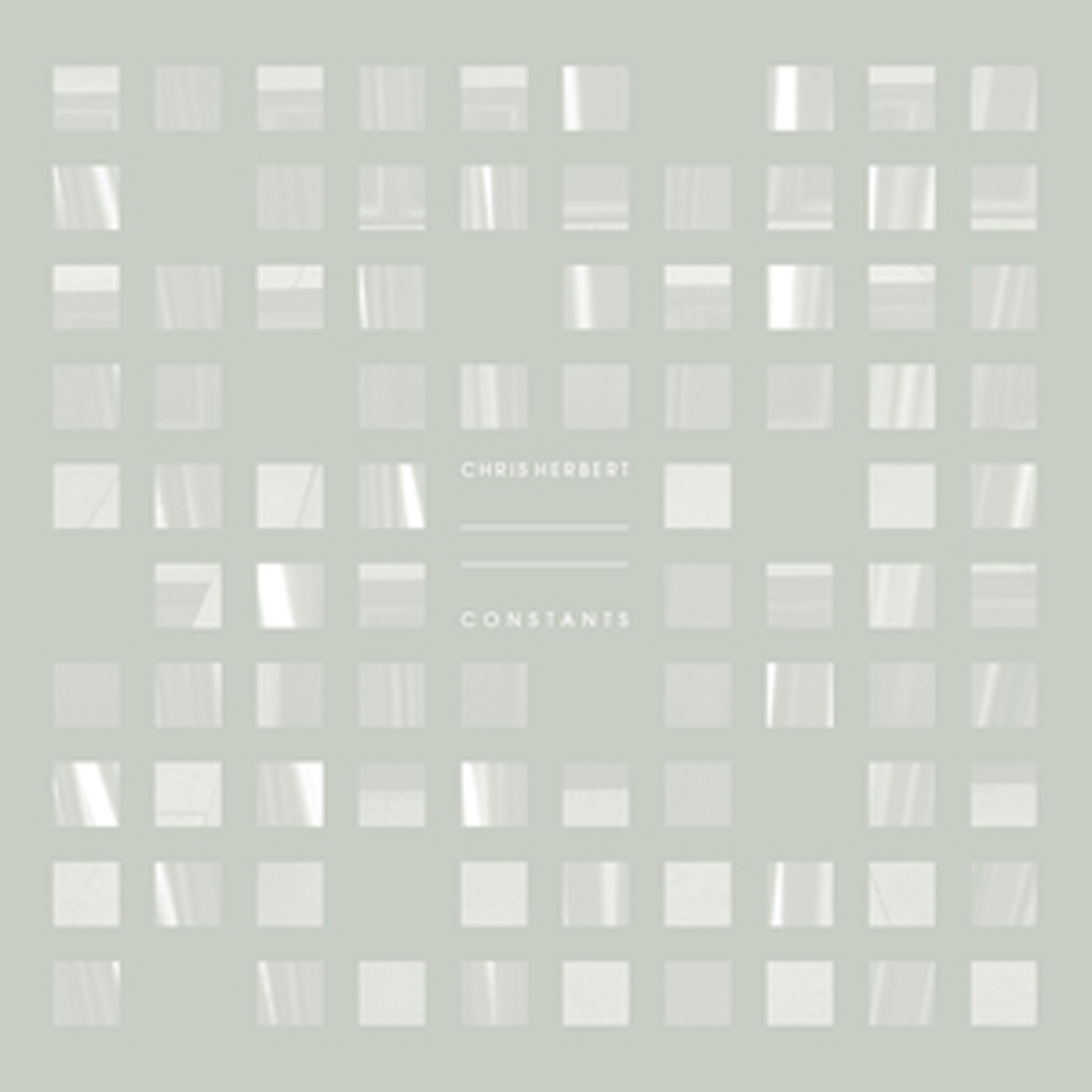 Ostensibly, Constants is the more substantial, significant release, though the brilliance of Wintex calls that intended hierarchy into question a bit.  At the very least, it is longer (it is a full-length).  Also, it is a bit more adventurous artistically, pushing Herbert's vision a bit further still from conventional drone.  What that means, essentially, is that there is less to immediately grasp as beautiful.  Instead, Constants sounds like it would have been an absolutely killer soundtrack for Andrei Tarkovsky's Solaris or Kubrick's 2001.  While a handful of pieces like "Cinders" share the warmth and melodicism of Wintex (despite the apparent presence of several malfunctioning droids), a significant portion of Constants sounds very "deserted and presumably haunted space station." Herbert's greatest achievement in that niche is hands-down "Cité Radieuse," which bolsters a constantly shifting and undulating organ-esqe drone with a peripheral atmosphere that calls to mind slowly pulsing, flickering lights; the hiss of broken valves; the shuddering of a damaged hull; and the crushing melancholy of space.  It is a truly haunting work in all regards.
Ostensibly, Constants is the more substantial, significant release, though the brilliance of Wintex calls that intended hierarchy into question a bit.  At the very least, it is longer (it is a full-length).  Also, it is a bit more adventurous artistically, pushing Herbert's vision a bit further still from conventional drone.  What that means, essentially, is that there is less to immediately grasp as beautiful.  Instead, Constants sounds like it would have been an absolutely killer soundtrack for Andrei Tarkovsky's Solaris or Kubrick's 2001.  While a handful of pieces like "Cinders" share the warmth and melodicism of Wintex (despite the apparent presence of several malfunctioning droids), a significant portion of Constants sounds very "deserted and presumably haunted space station." Herbert's greatest achievement in that niche is hands-down "Cité Radieuse," which bolsters a constantly shifting and undulating organ-esqe drone with a peripheral atmosphere that calls to mind slowly pulsing, flickering lights; the hiss of broken valves; the shuddering of a damaged hull; and the crushing melancholy of space.  It is a truly haunting work in all regards.
Nothing else on Constants quite captures that magic in an immediate, compartmentalized way, though the rest of the album is littered with a number of other striking passages, like the muted, dissonant horror of "Zona" or the unexpected and surreal appearances of subtle wildlife and water sounds late in the album.  Ultimately, however, Constants’ success is as an immersive, masterfully sequenced whole.  I probably listened to this album like four times without quite realizing the scope of Herbert’s achievement, as I was initially drawn in solely by the more conventionally musical pieces.  Now that I am giving it more attention, however, I am finding that I cannot possibly listen to it loud enough or often enough, as there is so much going on and it is all so complexly multilayered and shifting and vibrant that my mind reels.
I suppose Constants is solely for the true connoisseur: Wintex-Cimex 83 is for those simply looking for a unique and wonderful drone album (I am generally such a person myself), but Constants may actually be the more haunting and memorable mindfuck (and headphone album par excellence) for those willing to devote the necessary time and attention to unlocking its secrets.  For now, I still probably prefer Wintex-Cimex 83 (I am a sucker for warm, melancholy drone, I am afraid), though I already like Constants dramatically more than I did just last week, making it a very promising dark horse for one of my favorite albums of the year.  This is the very definition of a slow-burner.
Samples:
 
Read More
- Administrator
- Albums and Singles
 With two different generations of Italian electronic artists coming together, Maurizio Bianchi and Dedali stick closer to its title than the more industrial tinged harsher noise I was expecting.  The four pieces hint at Bianchi’s initial new age-y sound from his late 1990s reappearance, but manage to stay on the good, experimental side of that, with Dedali’s contributions providing a contemporary sheen.
With two different generations of Italian electronic artists coming together, Maurizio Bianchi and Dedali stick closer to its title than the more industrial tinged harsher noise I was expecting.  The four pieces hint at Bianchi’s initial new age-y sound from his late 1990s reappearance, but manage to stay on the good, experimental side of that, with Dedali’s contributions providing a contemporary sheen.
The four song cycle has a distinct flow, from lighter moments into darker dissonance and back again by the end.  The first piece is mostly light electronic pinging, with a haze enshrouded melody underscoring it.  The tones are subtle, and build upon each other during each piece, becoming less melodic as the piece progresses.  Dissonance sets in, pulling the passages into elongated, sputtering outbursts that still maintain the gracefulness that defined the early minutes.
The shorter second piece is where the duo recruit the most conventional new age sounds.  Largely exacerbated by the piano, dramatic electronic sweeps do manage make things bleaker than Yanni could ever get, but there are tentative steps in that direction.  The lighter moments brilliantly slip away towards its end, as the light synth sounds slowly drift from ringing bells into rattling chains, transitioning well into darkness.
The darkness continues into the third composition.  Expansive, wobbling electronics make the mood clear, and slowly the music becomes more sinister and hollow as it goes on.  Ghostly rumbles and harrowing emptiness keep it moody.  The bells that appear in the closing minutes have a certain cliché, yet endearing horror movie score sense to them. The final work keeps the aforementioned bells, but the duo lead off with a harsher, almost power electronics noise drone that contrasts very well.  As it continues, the piece's mood lightens, with the more aggressive layers peeling back to end on a gentler note, much like the album began.
While I know Bianchi has moved in softer directions from his dour early 1980s records, Dedali’s work that I have heard has been more harsh and aggressive.  Blending these two, Elektro Tones remains in a softer, hazy space wavering between cloudy ambience and cavernous darkness.  It is for this reason that it managed to not fall into the noise or dark ambient rut it could, thanks to MB and Dedali’s compositional skills and sensibilities.
samples:
 
Read More
- Administrator
- Albums and Singles
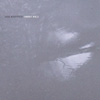 Field recordist Jana Winderen’s latest finds her indulging her long-standing passion for capturing the sounds of hidden environments yet again, this time in and around the Barents Sea region of the Arctic Ocean. Using an array of specialized microphones and a great deal of editing, she has woven the resultant decontextualized sounds into an immersive suite of frozen and mysterious desolation.
Field recordist Jana Winderen’s latest finds her indulging her long-standing passion for capturing the sounds of hidden environments yet again, this time in and around the Barents Sea region of the Arctic Ocean. Using an array of specialized microphones and a great deal of editing, she has woven the resultant decontextualized sounds into an immersive suite of frozen and mysterious desolation.
Energy Field is the sort of album that only a very specific type of person could have made and Jana Winderen is a very specific type of person: an artist living in Norway with a background in both science and fish ecology.Appropriately, it is also the sort of album that only a very specific type of person will enjoy, as it is composed purely of field recordings with no conventionally music elements.Also, its complexity can only be fully appreciated with headphones.
Despite the superficially limited scope of Winderen’s recording trips, she managed to accumulate quite a wide palette of sounds to work with. Aside from the deep undersea rumbles and hums that she was able to capture with hydrophones, Jana also spent some time harvesting sonic raw material from glacier crevasses, fjords, and various terrestrial areas of Greenland and Norway.As such, the three lengthy works collected here incorporate a number of disparate textures: howling winds, pleasantly burbling streams, breaking waves, crashes of thunder, chirping birds, yowling dogs, hungry and/or horny fish, cracking and straining sheets of ice, and a host of other sounds that are not readily identifiable.
The degree to which Winderen has tweaked the recordings is not entirely clear.Obviously, she cleaned them up a bit and combined them in strange and unexpected ways, but they still basically sound recognizable (although I regrettably cannot identify exactly what a crustacean sounds like).At times, some sounds seem to reverberate or echo cavernously in a way that suggests studio enhancement, but it is entirely possible that such resonance is natural.
The emphasis here is, unsurprising, quite firmly centered on process, concept, and the simple wonder of unearthing previously unheard sounds.Nevertheless, Jana does an admirable job of shaping her material into a listenable and quasi-musical arc.For example, there are distinct crescendos of deep multi-tracked bubbling and roaring waves, ominous passages of deep underwater drones, pleasant stretches of placid rippling, and shimmering beds of eerie oscillation and dissonance.It is an oft-mesmerizing soundworld to get drawn into- at its best, Energy Field is able to convey something far larger than any traditional musician could have: the disturbing enormity of the world that we never see.
Samples:
 
Read More
- Administrator
- Albums and Singles
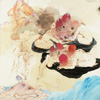
For their Thrill Jockey debut, this Baltimore three-piece continue to hone their signature electro-pop to new levels of clarity and focus. While looking to ‘80s synthesizer bands like OMD for inspiration is certainly a pretty common occurrence these days, Future Islands manage to make those familiar sounds seem fresh, muscular, and invigorating by departing from the blueprint in some inspired ways.
In Evening Air is likely to be most peoples' first exposure to Future Islands, but they have actually been steadily releasing material in one incarnation or another since 2003 (when they were known as Art Lord & the Self-Portraits).All those years toiling beneath the radar were clearly well-spent though, as the band’s frequent touring with fellow Wham City collective folks like Dan Deacon seems to have chiseled their songs down to their punchy essence and garnered them quite a following (the vinyl version of this album sold out with impressive speed).
Future Islands have only been a trio since 2007, but it is difficult to imagine them any other way, as the three members complement each other so perfectly that there doesn’t seem to be room for anyone else.The core elements of the band’s sound are J. Gerritt Welmers’ lush synth hooks and propulsive drum machine beats, but it is the other two members that elevate the music to something significantly more than skillfully rendered synthpop revivalism.I don’t tend to notice bass players very often in rock music, but the pared-down minimalism of Future Islands' sound pushes William Cashion’s punky strumming very much to the fore for dramatic effect.Welmers certainly does a great job crafting memorable melodies and bouncy songs, but their impact would be much blunted without Cashion’s throbbing and energetic low-end contribution.In fact, some songs ("Long Flight," for example) would still hold up beautifully even if the keyboards were removed entirely.
Front man Samuel T. Herring, however, is what truly sets the band apart from their peers.On record, his vocals are an endearingly soulful croak that imbues the songs with a ragged emotional resonance.That said, it was not until I watched a few videos and live performances that I began to fully appreciate him: he is so theatrically manic that it's like watching a Jack Black skit, but Herring isn’t joking.Or maybe he is, as the charmingly low-budget surrealism of the band’s early videos betrays an excellent sense of humor.Regardless of whether his exaggerated mannerisms are intentionally comic or not, he is undeniably fun to watch and very difficult to look away from.A singer that positively oozes charisma and heart provides the ideal foil for Welmers’ songcraft and melodic sense and Cashion’s general ballsiness.Future Islands have achieved that most elusive of qualities: excellent chemistry (coupled with the self-awareness needed to make the most of it).
In Evening Air is not quite a flawless album, as Herring sometimes errs a bit too much towards hamminess for my taste (particularly on "Tin Man").Also, the band can be a bit blunt in displaying their influences at times, most notably on "Walking Through That Door" (a forgivable crime though, since it is a great song).Nevertheless, the bulk of the songs are so catchy, well-constructed, and exuberant that I can’t help but fully embrace the album anyway (especially "An Apology").
Samples:
 
Read More
- John Kealy
- Albums and Singles
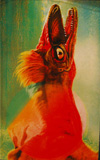 This cassette is the debut solo release from Andrew Fogarty (also of Boys of Summer and Toymonger) and it builds on the same dreamy electronic textures as his other projects. Caught somewhere between '80s sci-fi soundtracks, sound effects, and drifting electronics, the music on this EP is a shimmering blend of styles and sounds.
This cassette is the debut solo release from Andrew Fogarty (also of Boys of Summer and Toymonger) and it builds on the same dreamy electronic textures as his other projects. Caught somewhere between '80s sci-fi soundtracks, sound effects, and drifting electronics, the music on this EP is a shimmering blend of styles and sounds.
 
The two pieces on the cassette both investigate the variety of tones that can be wrought from analogue synthesizers. The bubbling and racing sounds Fogarty extracts from his synths on side A gives a feeling of traveling at speed through a kaleidoscope. Some of Fogarty’s style is instantly recognizable from his work in Boys of Summer but he expands his palette significantly throughout this and the subsequent piece. Ray guns, radiation, tractor beams, force fields and teleporters: these are the kind of images that come to mind listening to Dinosaur.
Side B is an altogether warmer piece as dozens of balmy loops and layered melodies compete with each other; the mix boiling like a primordial soup during a storm. Suddenly the chaos gives way to a wet, pulsing noise which steadily increases in its intensity. The piece eventually returns to a similar kind of kosmische-influenced sound-scape like on side A.
While Dinosaur does not shift Boys of Summer from the top of my favorite Fogarty-related projects, it does pack enough punch to be a serious contender. Both sides of the tape show enough variation and tonal development to place Reptile Brain beyond the categorization of simple noise. There is more in common here with music from the BBC’s Radiophonic Workshop than with the contemporary noise scene; granted this is not that unusual but Fogarty does it with a lot of class.
 
Read More
- Administrator
- Albums and Singles
 This is a tantalizing set of early '70s reel-to-reel tapes by Soft Machine co-founder Ayers: lovely, intimate, and enlightening stuff by an idiosyncratic talent who made it look easy while giving off an allure of privilege, trippiness and innocence somewhere midway between Howard Marks and Christopher Robin.
This is a tantalizing set of early '70s reel-to-reel tapes by Soft Machine co-founder Ayers: lovely, intimate, and enlightening stuff by an idiosyncratic talent who made it look easy while giving off an allure of privilege, trippiness and innocence somewhere midway between Howard Marks and Christopher Robin.
Kevin Ayers may yet get his due. His influence on British psychedelia and the avant-garde school of glam rock are pretty obvious. Equally, Brian Eno's first solo records (the pre-ambient period beginning with Here Come The Warm Jets) owe as much of a debt to Kevin Ayers as they do to the Velvets. Older music lovers won't need to take my word for it, though, as they will fondly recall the 1974 concert and album Ayers did with Cale, Nico, & Eno (ACNE).
A late harvest is in bloom for Ayers with this release, as well as the 4 CD set Songs For Insane Times 1969-1980 (including an unreleased 1973 London concert) and his rapturously received new album Unfairground (made with fans from Neutral Milk Hotel and Teenage Fan Club, Bill Wells, Bridget St. John, Phil Manzanera and others). Ayers best work is a dance between his joyful talent and his lack of killer instinct. His concerns tend to be women, wine, and philosophy (not necessarily in that order).
Fellow former commune dweller G.F. Fitz-Gerald has hung on to these discarded tapes for more than 30 years. The sections where Ayers is laying out both simple and complex demos and specifying what will go where, who will be doing it and what it will sound like are fascinating. Hearing Ayers singing again reminds me of the contrast between his voice and that of his fellow Soft Machinist, Robert Wyatt. Wyatt's cracked, yearning voice can sound beautiful but always seemed like a strain. Ayers sounds like a man permanently on holiday and his resonant tone slides around as rich and easy as rum spilled on a glass table. His guitar playing is underrated, too, as shown on the playful and fuzzy instrumental track "Crystal Clear."
While What More Can I Say is probably destined to be known as a footnote to Ayers' work it is quite fascinating and very much more than scraping the barrel. It harks back to a time when he was almost something of an It-Kid, what with his joy of punning, his easy talent, his posh other-ness, his languid baritone croon, and his dreamy blond looks. It could all have turned out differently, and yet may. What has turned out is that he never had a star's ego or an inheritance. Marvelously, even now his photos exude the style of a bloke who used to hang out with Bardot and Deneuve but with whom it would probably be a rare pleasure to spend time sharing intoxicants; the least of which would not be his music.
samples:
Read More
- Administrator
- Albums and Singles
 A lot of artists find inspiration in the works of H.P. Lovecraft but very few capture the essence of his horror. Metallica's "The Call of Ktulu" is a classic piece of thrash but it comes nowhere close to the cosmic terror and unease of Lovecraft's prose. Similarly, Alexander Hacke and The Tiger Lillies’ Mountains of Madness was a loving but ultimately camp tribute to the author. However, here the Southampton trio have honed their sound to create the same sense of dread that made Lovecraft’s stories so disturbing.
A lot of artists find inspiration in the works of H.P. Lovecraft but very few capture the essence of his horror. Metallica's "The Call of Ktulu" is a classic piece of thrash but it comes nowhere close to the cosmic terror and unease of Lovecraft's prose. Similarly, Alexander Hacke and The Tiger Lillies’ Mountains of Madness was a loving but ultimately camp tribute to the author. However, here the Southampton trio have honed their sound to create the same sense of dread that made Lovecraft’s stories so disturbing.
Obsessed with Lovecraft, ritual and recreating the atmospheres of an underground temple, it is easy to see how Moss arrived at their musical aesthetic. After the eerie Hammond organ, barely audible vocals and distant percussion of “Ritus” provide an unearthly start to the album, the ground opens up with a swell of guitar and swallows the victim whole. The drums and vocals both sound like they are coming from a chasm deep within the earth, the howls of a beshrouded priest and the percussive rhythms of the ceremony he is performing.
Listening to this album during the day is a futile endeavour, Sub Templum is all about context. Sitting down at night with the detailed sleeves in your hands and turning the volume up is the only way to do it. The arcane symbols and darkly psychedelic imagery of the sleeve make this less of an album and more of a grimoire. It would not surprise me if you could conjure up some foul demon by knowing the right gestures at the right points of the music. The three piece suite “Gate III: Devils from the Outer Dark” which takes up the second half of the album is how imagine such a moment would sound like, only in reality I doubt it would be as frightening.
Most of the descriptions and reviews of Moss I read treat them as just another doom band and while they are indeed as doom as fuck, they have made an album that manages to transcend the doom genre that spawned the band. Sub Templum is a dizzying and upsetting sonic journey that just happens to have massive riffs. There is a lot going on between the grooves and it is not all just Sabbath worship. Since their debut, they have sculpted their blackened sound away from genre clichés and have managed to develop a unique sound that on the surface is metal but this only hides in its depths a portal to a weird and foreboding dimension.
This review was made from the vinyl version of the album so unfortunately no mp3 samples.
Read More





